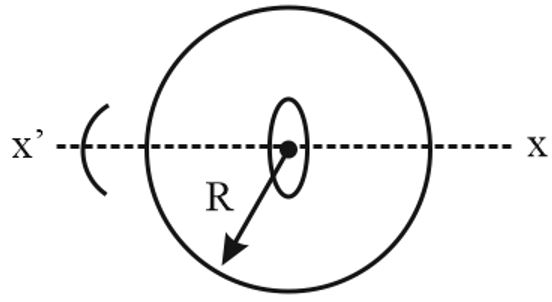Q.
A non-conducting ring of radius $R$ having uniformly distributed charge $Q$ starts rotating about $x-x'$ axis passing through diameter with an angular acceleration $\alpha $ , as shown in the figure. Another small conducting ring having radius $a$ $\left(a \ll R\right)$ is kept fixed at the centre of the bigger ring is such a way that axis $xx'$ is passing through its centre and perpendicular to its plane. If the resistance of the small ring is $r=1 \, \Omega ,$ find the induced current in it in $ampere$ .
(Given $q=\frac{16 \times 1 0^{2}}{\mu _{0}} \, C,$ $R=1 \, m, \, a \, = \, 0.1 \, m$ , $\alpha =8 \, rad \, s^{- 2}$ )

NTA AbhyasNTA Abhyas 2020
Solution:
